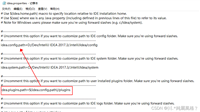spring boot + freemarker 实现动态word文档导出
在现代企业应用中,文档自动化生成是一项提升工作效率的重要功能。spring boot与freemarker的组合,为开发者提供了一个强大的平台,可以轻松实现动态word文档的导出。本文将指导你如何使用spring boot与freemarker模板引擎,创建一个简单的应用,用于根据数据库数据动态生成word文档并下载。
技术栈简介
- spring boot:简化spring应用初始搭建以及开发过程的框架,提供了快速开发、运行、部署的解决方案。
- freemarker:一款用java编写的模板引擎,特别适合生成html、xml、rtf、java源代码等文本格式的输出,当然也包括word文档。
准备工作
1. 创建spring boot项目
使用spring initializr创建一个新的spring boot项目,记得勾选thymeleaf(虽然我们用freemarker,但thymeleaf依赖也会带来spring mvc的支持,便于后续配置)。
2. 添加freemarker依赖
在pom.xml中加入freemarker的依赖。
<dependency> <groupid>org.springframework.boot</groupid> <artifactid>spring-boot-starter-freemarker</artifactid> </dependency>
3. 配置freemarker
在application.properties中配置freemarker的路径。
spring.freemarker.template-loader-path=classpath:/templates/
创建freemarker模板
在src/main/resources/templates目录下,创建一个名为document.ftl的freemarker模板文件,内容如下:
<!doctype html>
<html> <head> <#assign document = { "title": "动态word文档", "content": [ {"header": "章节一", "text": "这里是章节一的内容..."}, {"header": "章节二", "text": "这里是章节二的内容..."} ] }> </head> <body> <h1>${document.title}</h1> <#list document.content as section> <h2>${section.header}</h2> <p>${section.text}</p> </#list> </body> </html>编写controller
创建一个controller来处理请求,读取模板并填充数据,最后将word文档返回给用户下载。
java import org.springframework.beans.factory.annotation.autowired; import org.springframework.ui.freemarker.freemarkertemplateutils; import org.springframework.web.bind.annotation.getmapping; import org.springframework.web.bind.annotation.restcontroller; import freemarker.template.configuration; import freemarker.template.template; import org.springframework.http.httpheaders; import org.springframework.http.mediatype; import org.springframework.http.responseentity;
import java.io.ioexception; import java.util.hashmap; import java.util.map;
@restcontroller public class documentcontroller {
@autowired
private configuration freemarkerconfig;
@getmapping("/export")
public responseentity<byte[]> exportdocument() throws ioexception {
// 假设数据是从数据库获取的,这里为了简化直接构造示例数据
map<string, object> datamodel = new hashmap<>();
datamodel.put("title", "来自数据库的标题");
datamodel.put("content", getdatabasecontent());
template template = freemarkerconfig.gettemplate("document.ftl");
string processedhtml = freemarkertemplateutils.processtemplateintostring(template, datamodel);
// 将html转换为word文档(此处简化处理,实际可能需要使用apache poi等库)
byte[] wordbytes = converthtmltoword(processedhtml);
httpheaders headers = new httpheaders();
headers.setcontenttype(mediatype.application_octet_stream);
headers.setcontentdispositionformdata("attachment", "document.docx");
return new responseentity<>(wordbytes, headers, httpstatus.ok);
}
private list<map<string, string>> getdatabasecontent() {
// 此处模拟从数据库获取数据
return arrays.aslist(
map.of("header", "数据库章节一", "text", "数据库内容一"),
map.of("header", "数据库章节二", "text", "数据库内容二")
);
}
// 简化的html转word逻辑,实际应用中可能需要更复杂的转换过程
private byte[] converthtmltoword(string html) {
// 这里省略了html转word的具体实现,可以使用第三方库如apache poi等
return html.getbytes(); // 这只是示例,实际返回的应该是word文档的字节流
}
}总结
通过上述步骤,我们使用spring boot与freemarker成功构建了一个简单的应用,能够根据模板和数据库数据动态生成word文档并提供下载。实际应用中,你可能需要引入额外的库(如apache poi等)来更精确地控制word文档的样式和结构,以及更高效地处理html到word的转换过程。此外,确保处理好模板的安全性,避免注入攻击等问题。
到此这篇关于spring boot + freemarker 实现动态word文档导出的文章就介绍到这了,更多相关spring boot freemarker word文档导出内容请搜索代码网以前的文章或继续浏览下面的相关文章希望大家以后多多支持代码网!





发表评论